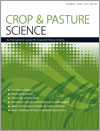Sugarcane improvement has traditionally been conducted by nationally focussed breeding programs, with some exchange of elite cultivars among some programs. It has been generally assumed by breeders that genotype × country interactions are large, and therefore selection trial data in one country may be of limited relevance to another. However, no studies quantifying clone × country interactions have been reported to our knowledge. In research reported here, a common set of mostly unselected sugarcane genotypes was evaluated in commercial production environments in Australia and China. Consistent with past studies, genotype × site interaction was an important source of variation within each country. Overall a moderate to high genetic correlation existed between production environments in China and Australia for cane yield and sugar content (0.77 for both traits). This suggests that despite difference in environmental conditions and crop management in production environments between countries, that selection trials in China have some relevance for selecting clones for Australian environments and vice versa. It also supports the hypothesis that regular exchange of selected germplasm from effective breeding programs between countries will have mutual benefits.
How to translate text using browser tools
13 August 2012
Genotype × environment interactions in sugarcane between China and Australia
Xuekuan Chen,
Phillip Jackson,
Wankuan Shen,
Haihua Deng,
Yuanhong Fan,
Qiwei Li,
Fengduo Hu,
Xianming Wei,
Jiayong Liu
ACCESS THE FULL ARTICLE

Crop and Pasture Science
Vol. 63 • No. 5
August 2012
Vol. 63 • No. 5
August 2012
breeding
Genetic correlations
germplasm exchange
selection




